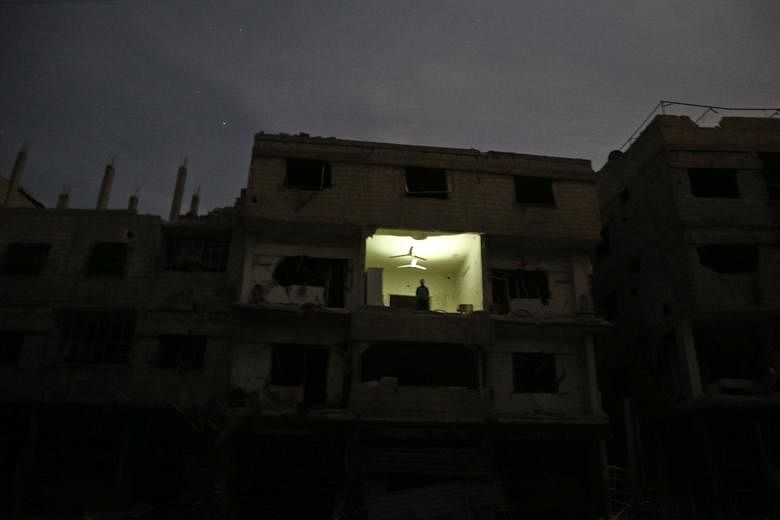BEIRUT (AFP) - Since the start of the Syrian conflict in 2011, many internationally sponsored ceasefire accords to halt the bloodshed have been agreed - only to fail almost immediately.
Here is a rundown:
SEVERAL HOURS
Despite initial optimism, a truce brokered by UN-Arab League envoy Kofi Annan to end 13 months of bloodshed in Syria shatters within hours of coming into force in April 2012.
The UN Security Council agrees that month to authorise the deployment of 30 observers, later expanded to 300. But the chief UN observer in June announces suspension of the mission because of an "intensification of armed violence".
STILLBORN
In October 2012, Annan's successor Lakhdar Brahimi tries to clinch a temporary ceasefire for the Muslim feast of Eid al-Adha.
The truce comes into force on October 26 but is violated within hours, with the regime and opposition trading blame.
There is an upsurge in violence, with airstrikes and rebel attacks. Nearly 300 people die over three days, according to the Syrian Observatory for Human Rights monitor.
ON PAPER ONLY
In October 2014, the UN's new envoy, Staffan de Mistura, proposes the establishment of "freeze zones" to suspend fighting and allow for aid deliveries.
In 2015, he pushes for Aleppo to become such a zone, making the key battleground city the centrepiece of his efforts to mediate a halt to fighting.
But the plan is eventually abandoned.
REGULARLY VIOLATED
On Feb 27, 2016, a ceasefire is imposed by Russia and the United States, respectively backers of the regime and the rebels.
But as early as March 4 government air forces restart bombing rebel areas east of Damascus, with other violations over the coming weeks.
The truce is declared formally over in April with regime forces carrying out bombardments of Aleppo and other areas.
"The ceasefire no longer exists, it is finished," the Observatory says. Nearly 300 civilians are killed in bombardments between April 22 and May 5, it says.
ALEPPO'S NON-EXISTENT TRUCE
On Sept 12, 2016, a new ceasefire comes into force for Aleppo under an accord announced by Moscow and Washington.
The city's rebel-held east had been surrounded by government troops the month before, the blockade leading to food and fuel shortages.
But air strikes and fighting claim new civilian casualties and on Sept 19 the army declares the truce is over.
Damascus and its Russian ally launch a large-scale offensive in eastern Aleppo. After a month of relative respite, it is relaunched mid-November with barrel bombs, shells and rockets.
On Dec 22, the regime announces it has recaptured the whole of Aleppo after the evacuation of the last of several thousand rebels and civilians as part of a Russia-brokered plan.
DEAD LETTER
In July 2017, Russia announces a truce agreement with "moderate" rebel groups in eastern Ghouta, a region near the capital under government siege and attack since 2013.
This would make it one of several proposed "de-escalation zones" across the country.
But there is no let-up in regime strikes.
In November 2017, de Mistura says Damascus has accepted a new ceasefire for eastern Ghouta. Three weeks of army bombardments and rebel attacks put an end to this effort.
On Feb 24, 2018, after relentless Russian-backed strikes on eastern Ghouta that kill more than 500 civilians in a week, the UN Security Council votes for a 30-day humanitarian truce.
But strikes continue.
Russia announces on Feb 26 that a daily five-hour "humanitarian pause" should come into force from the following day.

